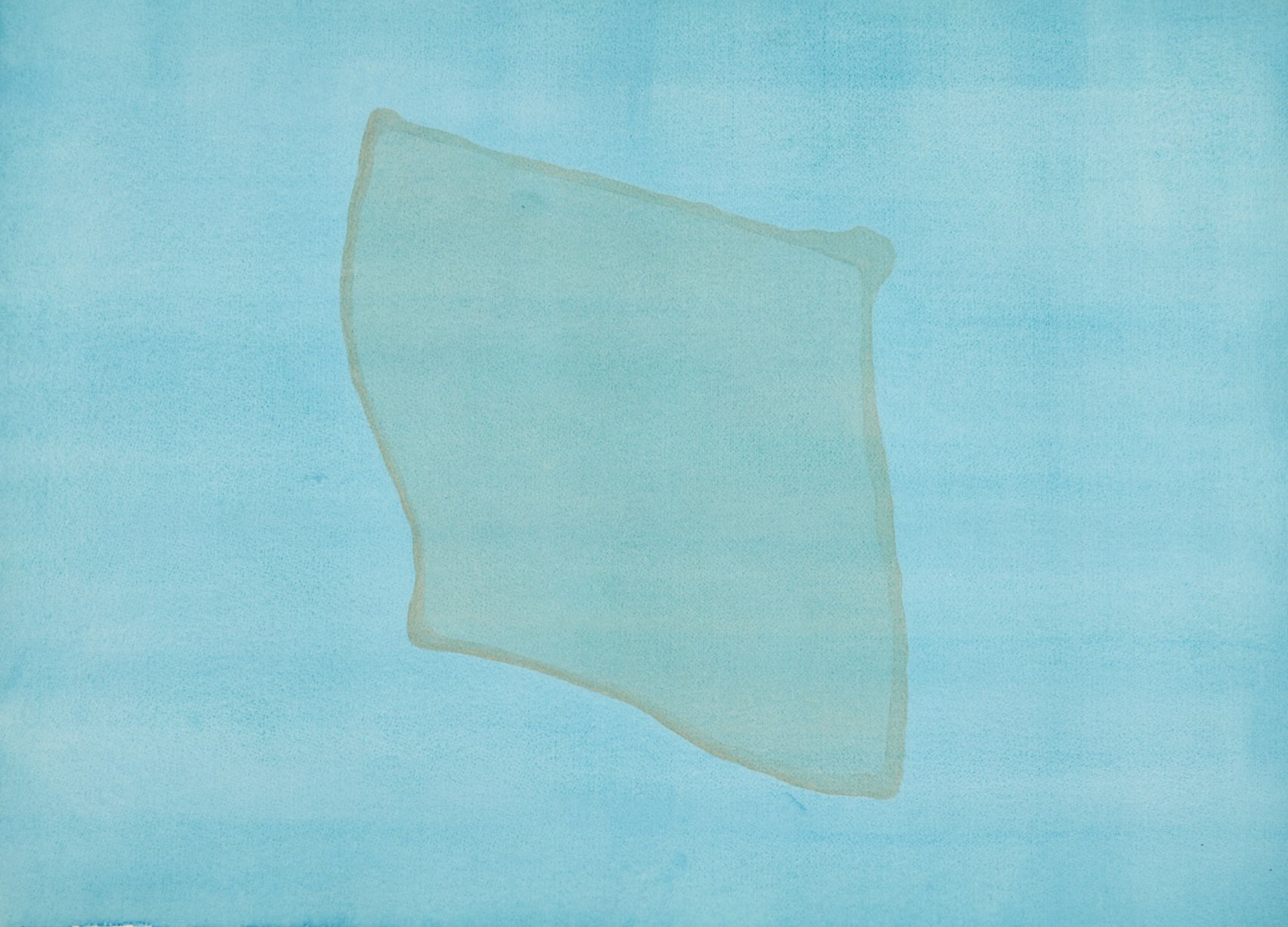Bilgé: Lifespan of a Horizontal Line
Works from the 1970s
Curated by Isin Onol
February 23, 2023 - April 10, 2023
Opening February 23, 2023, 6-8 pm
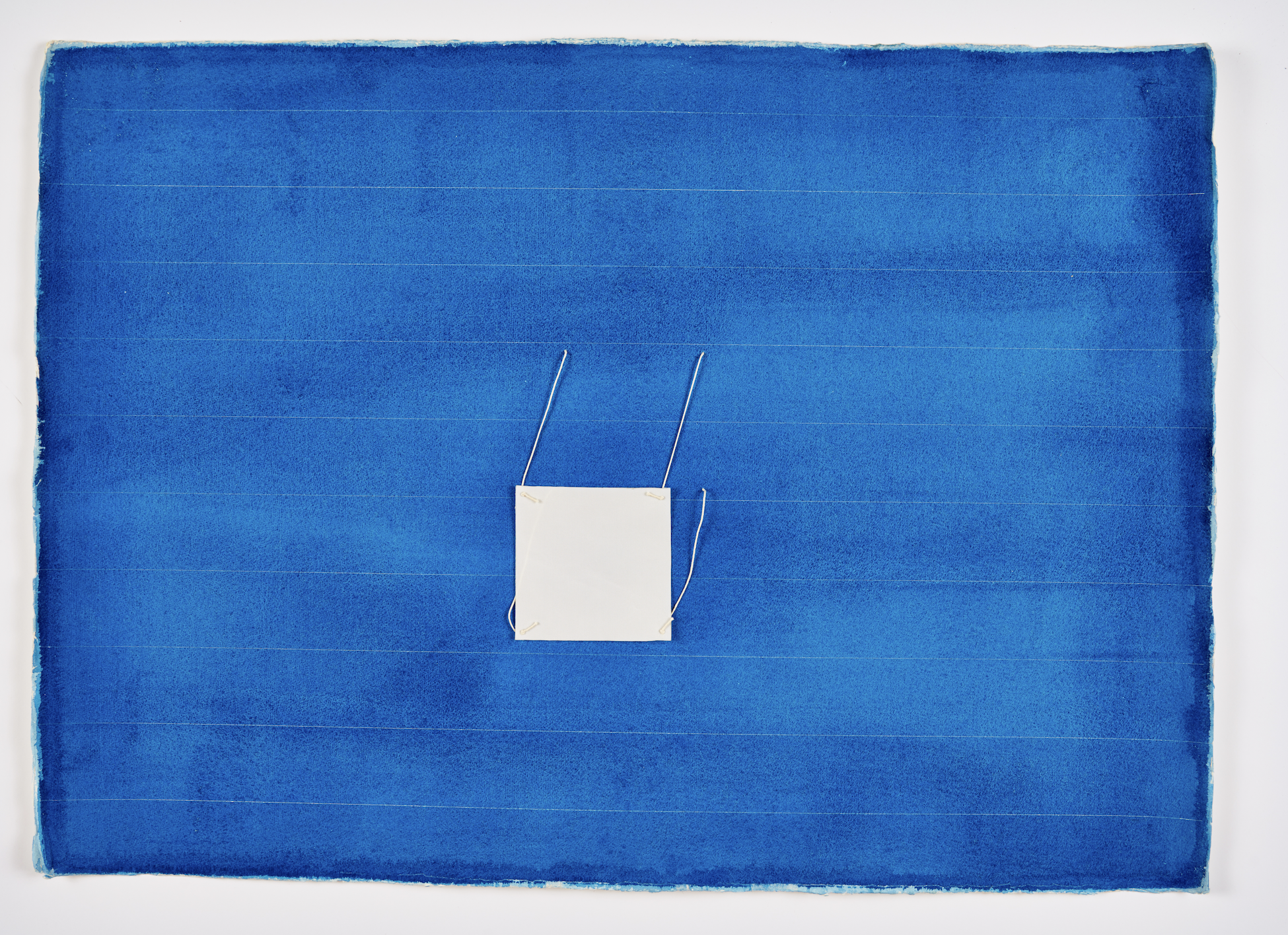
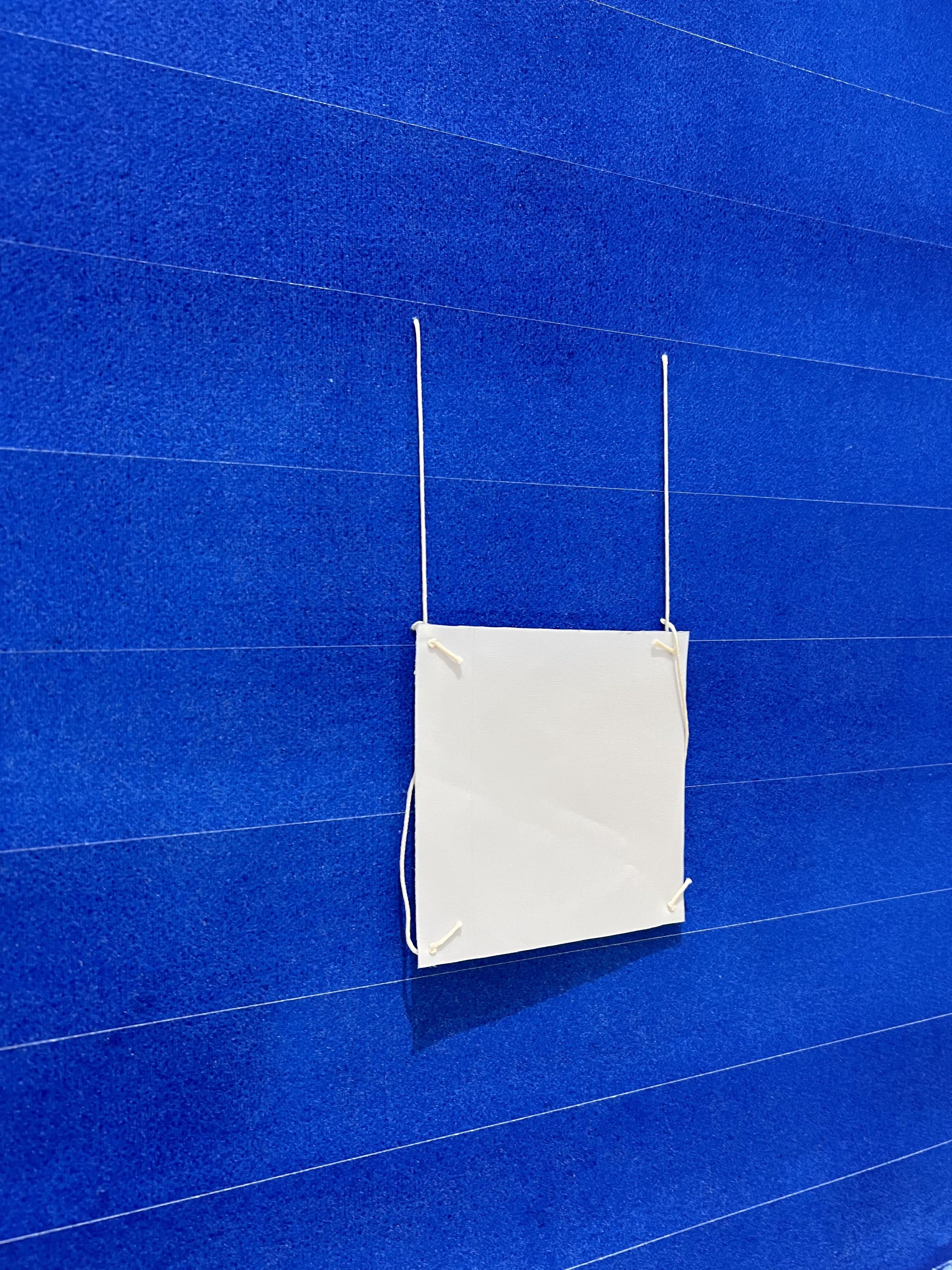
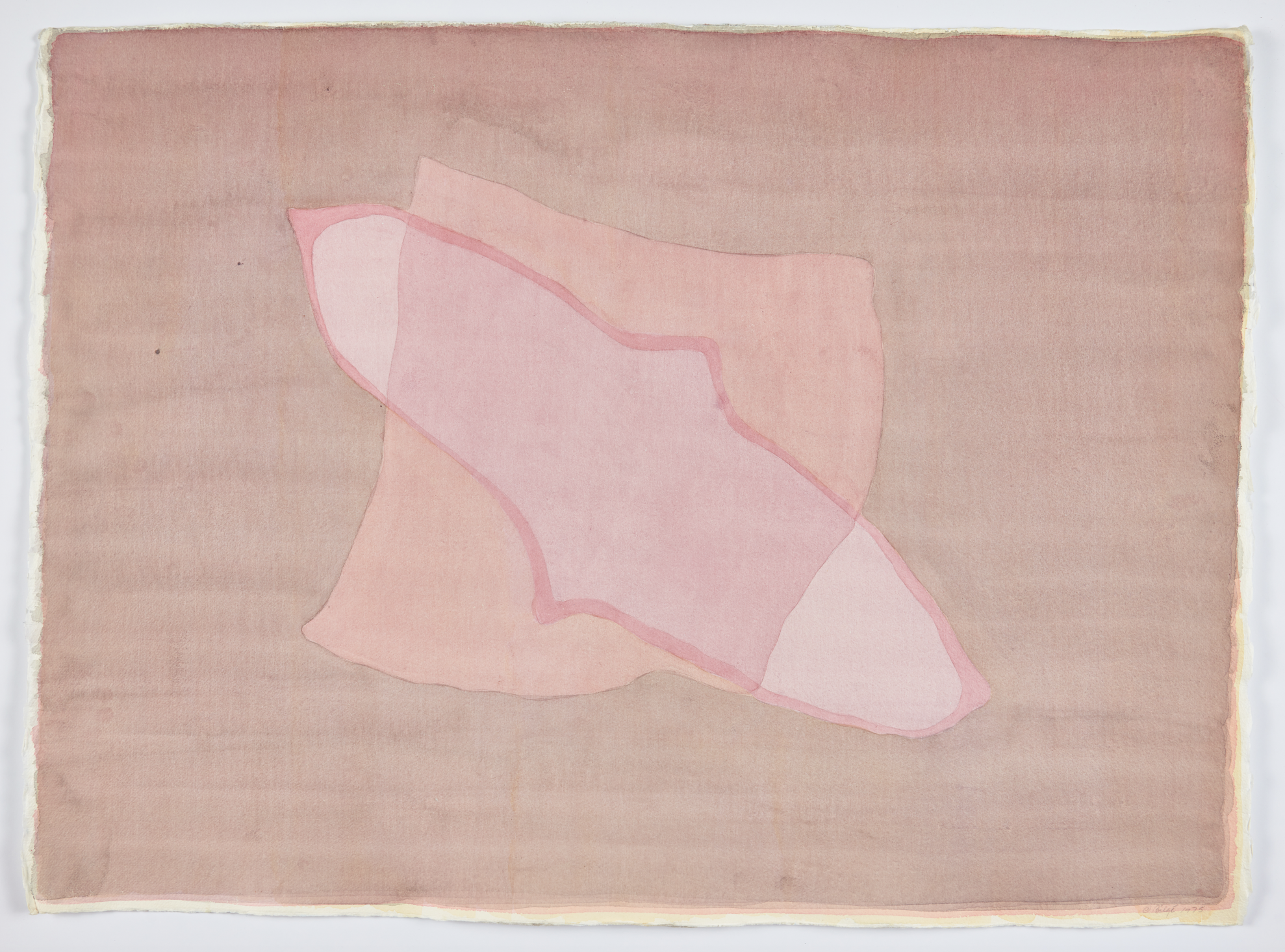
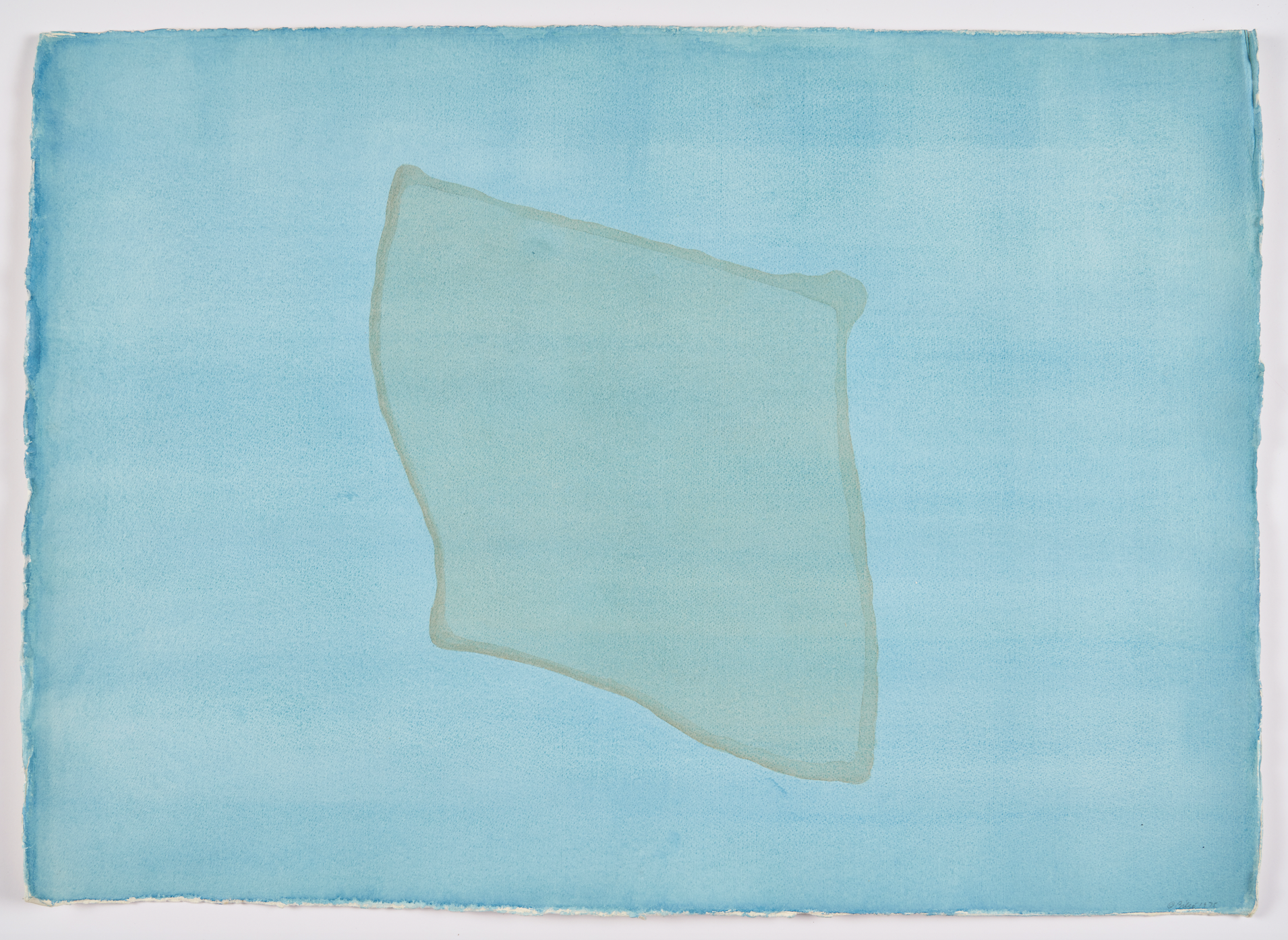
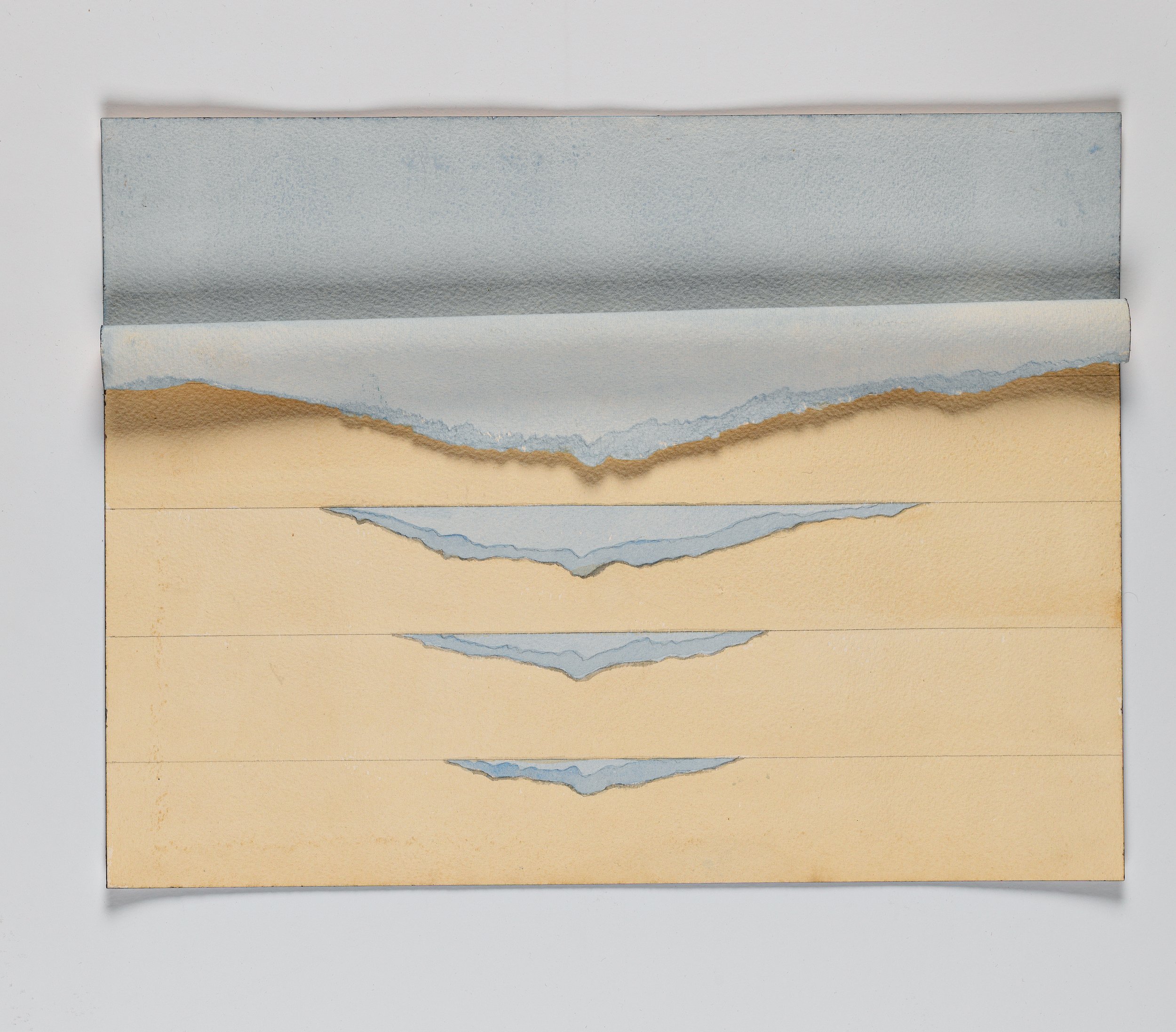
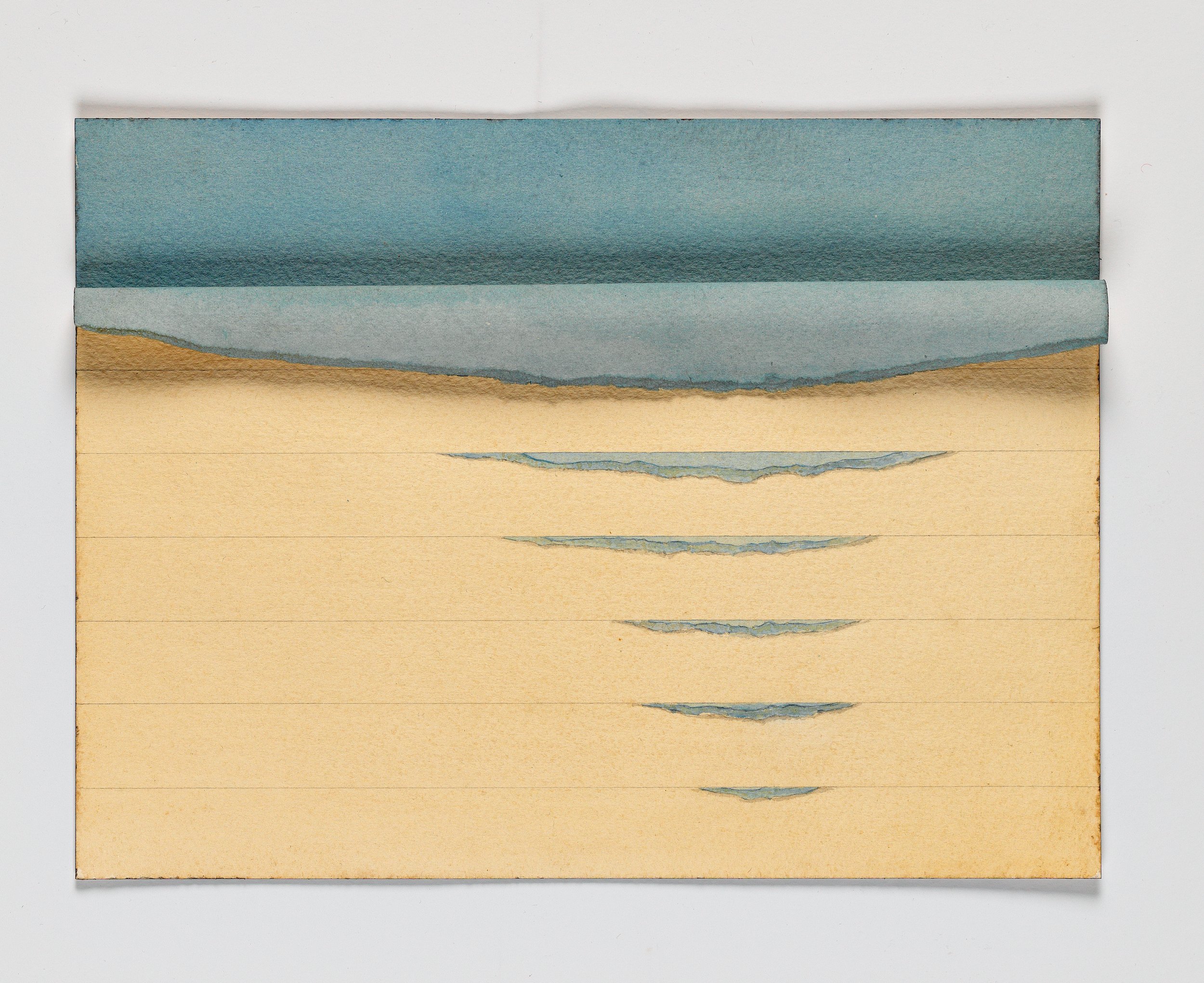
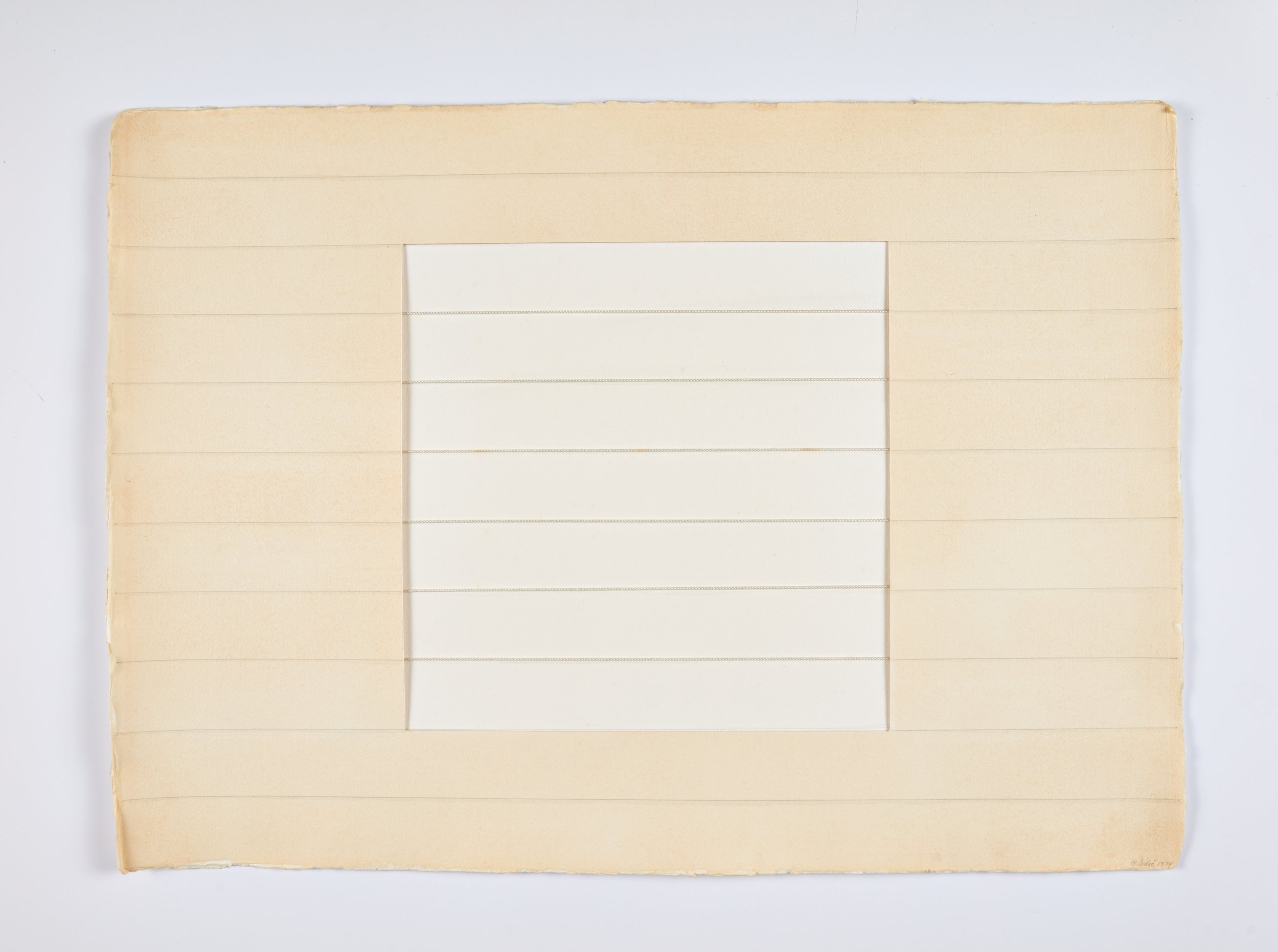
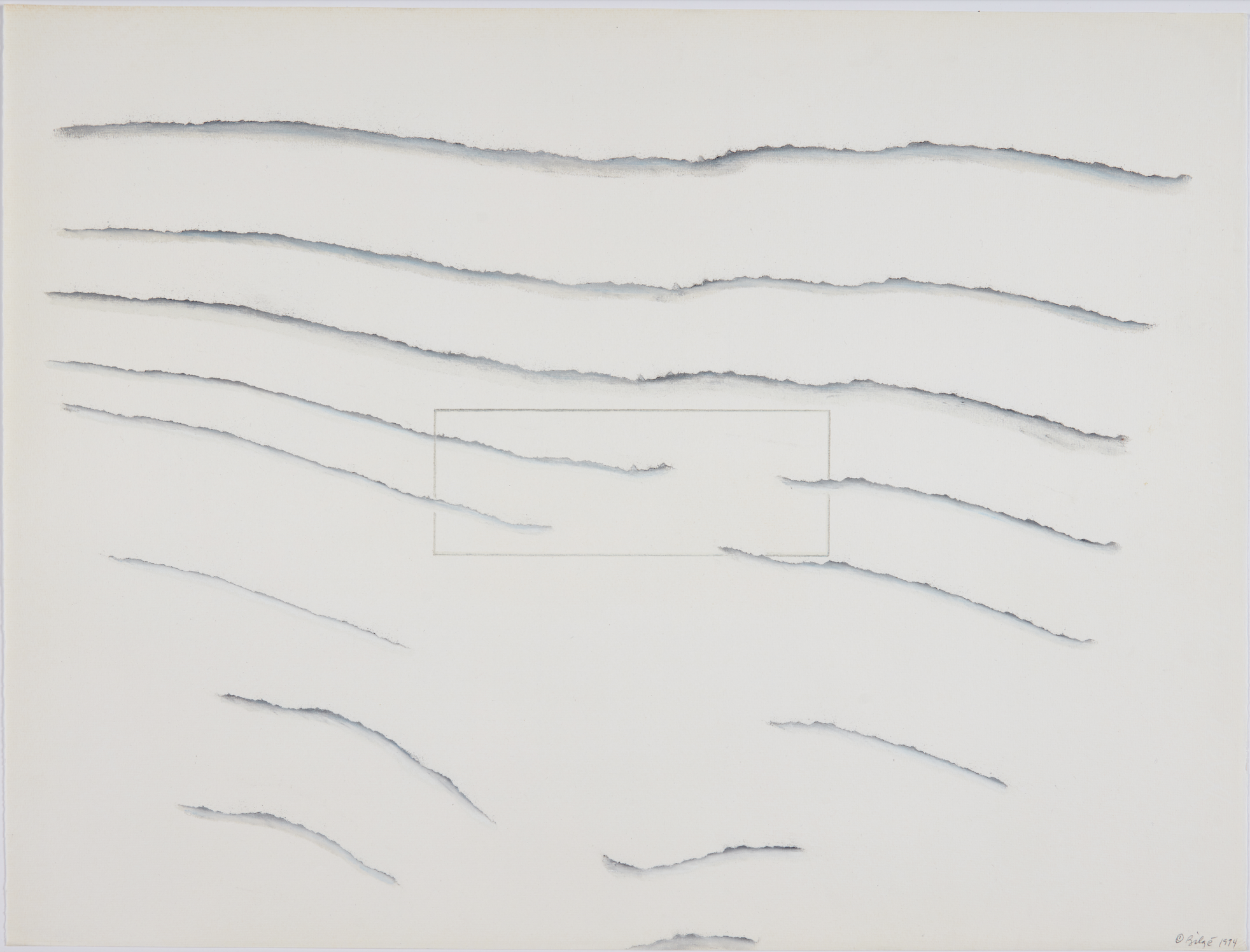
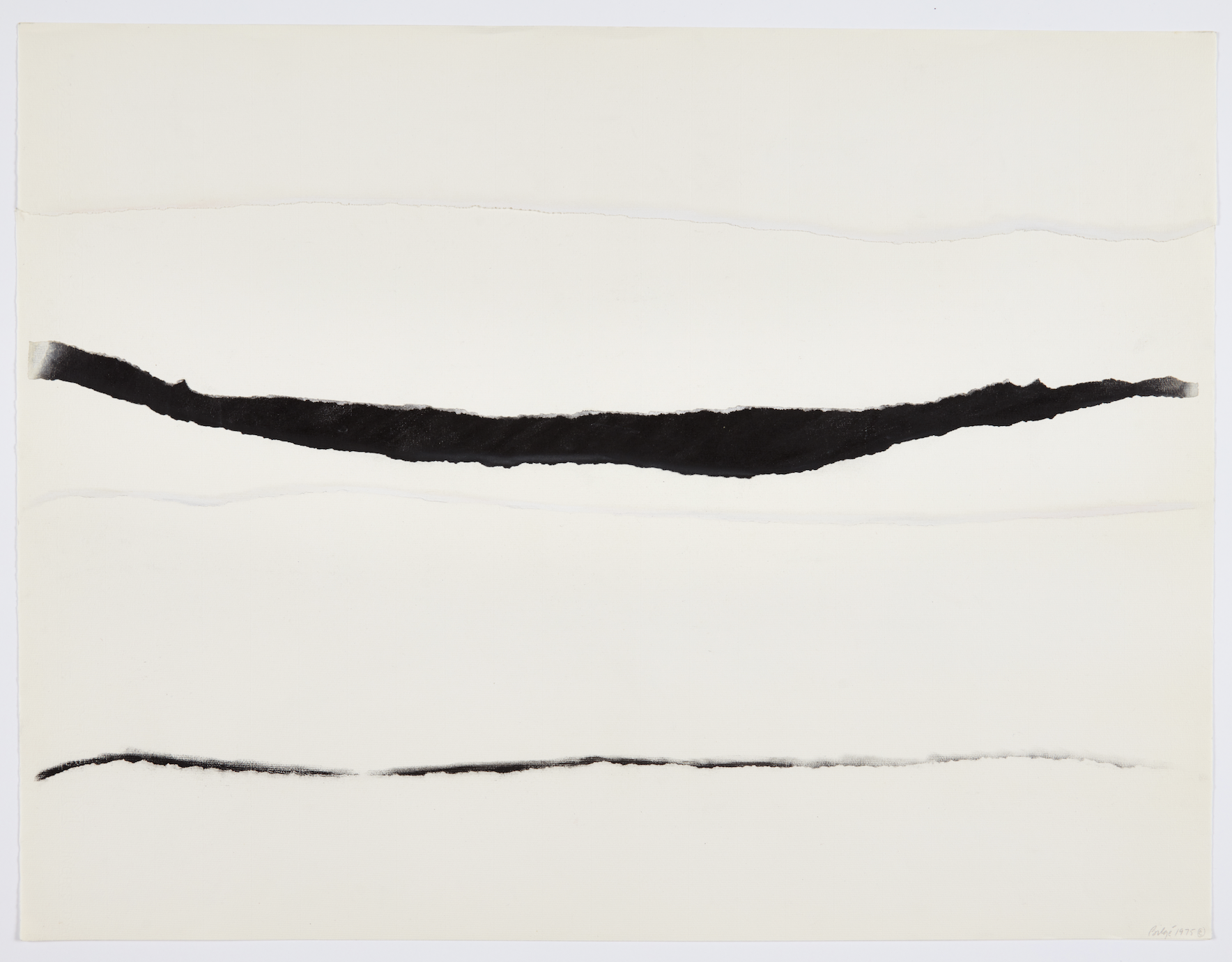
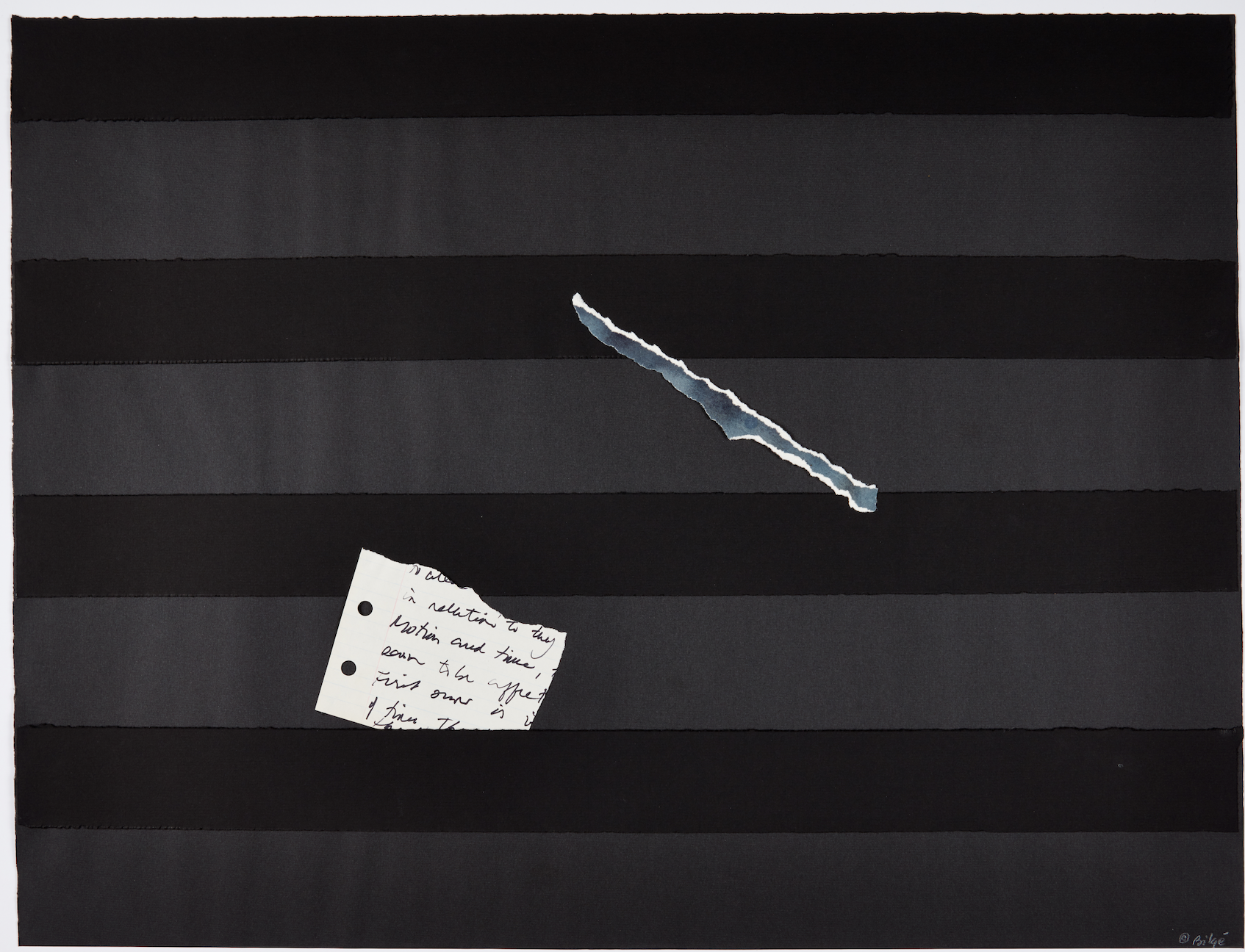
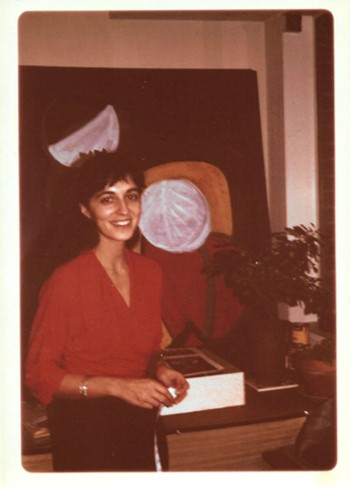
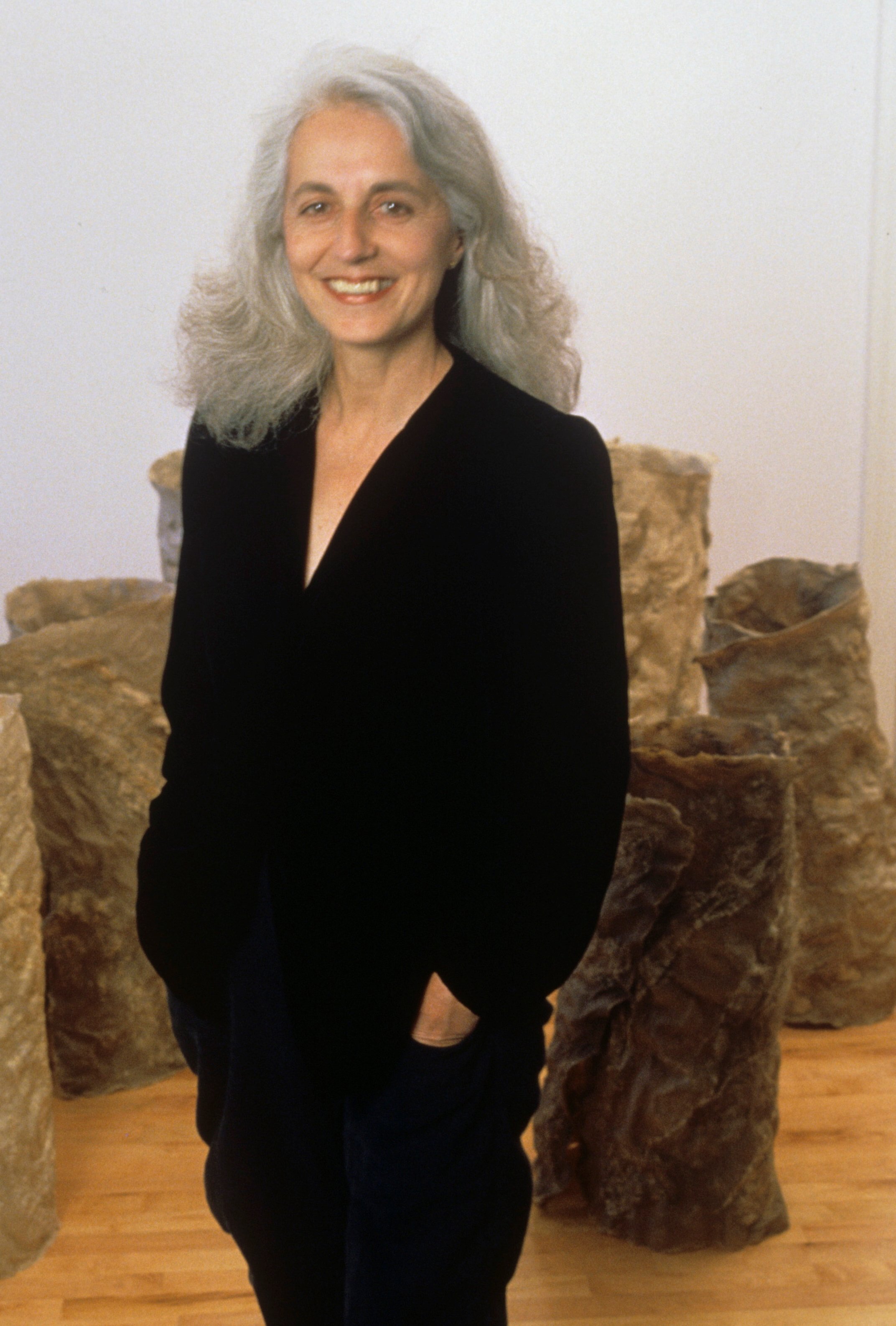
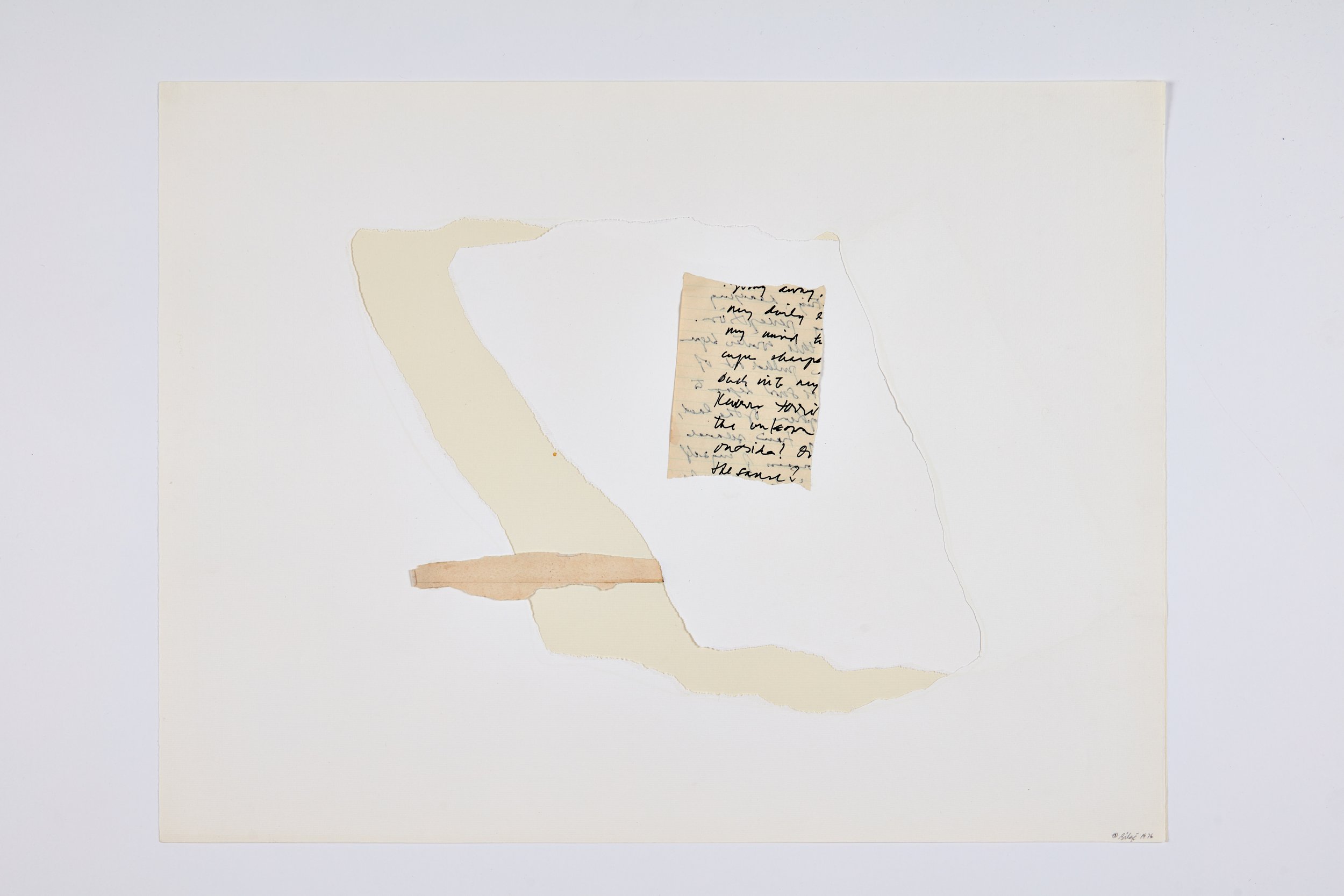
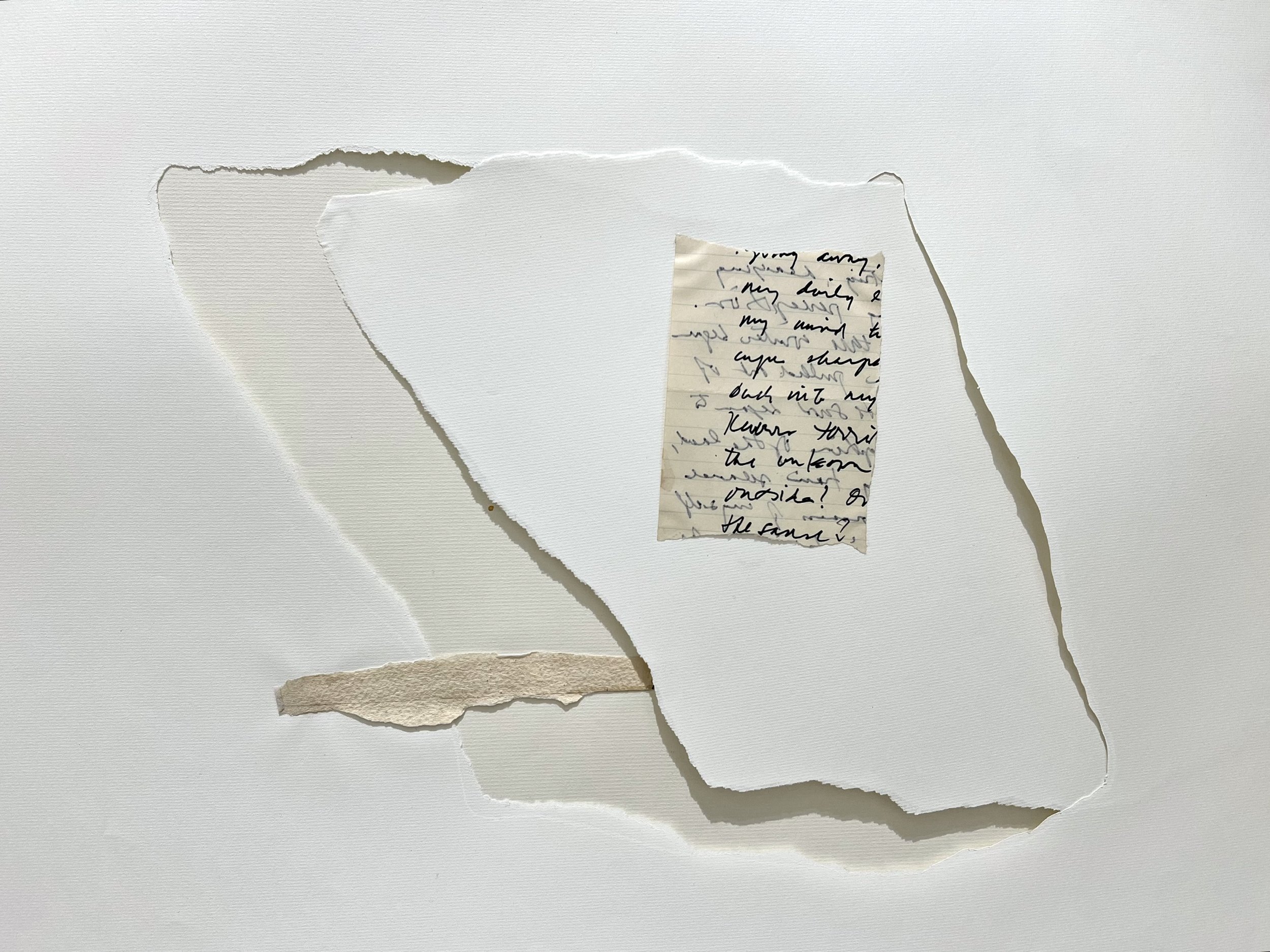
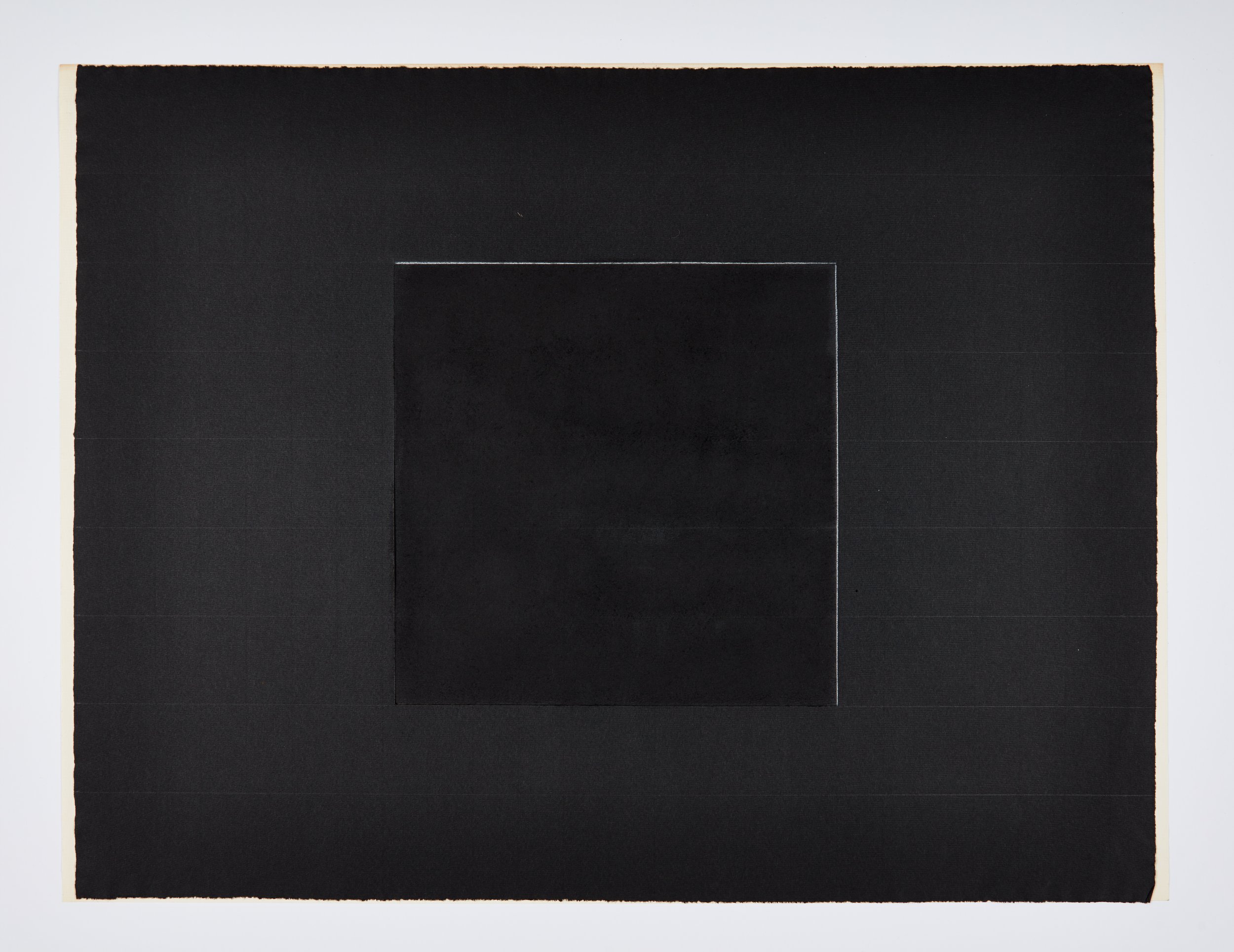
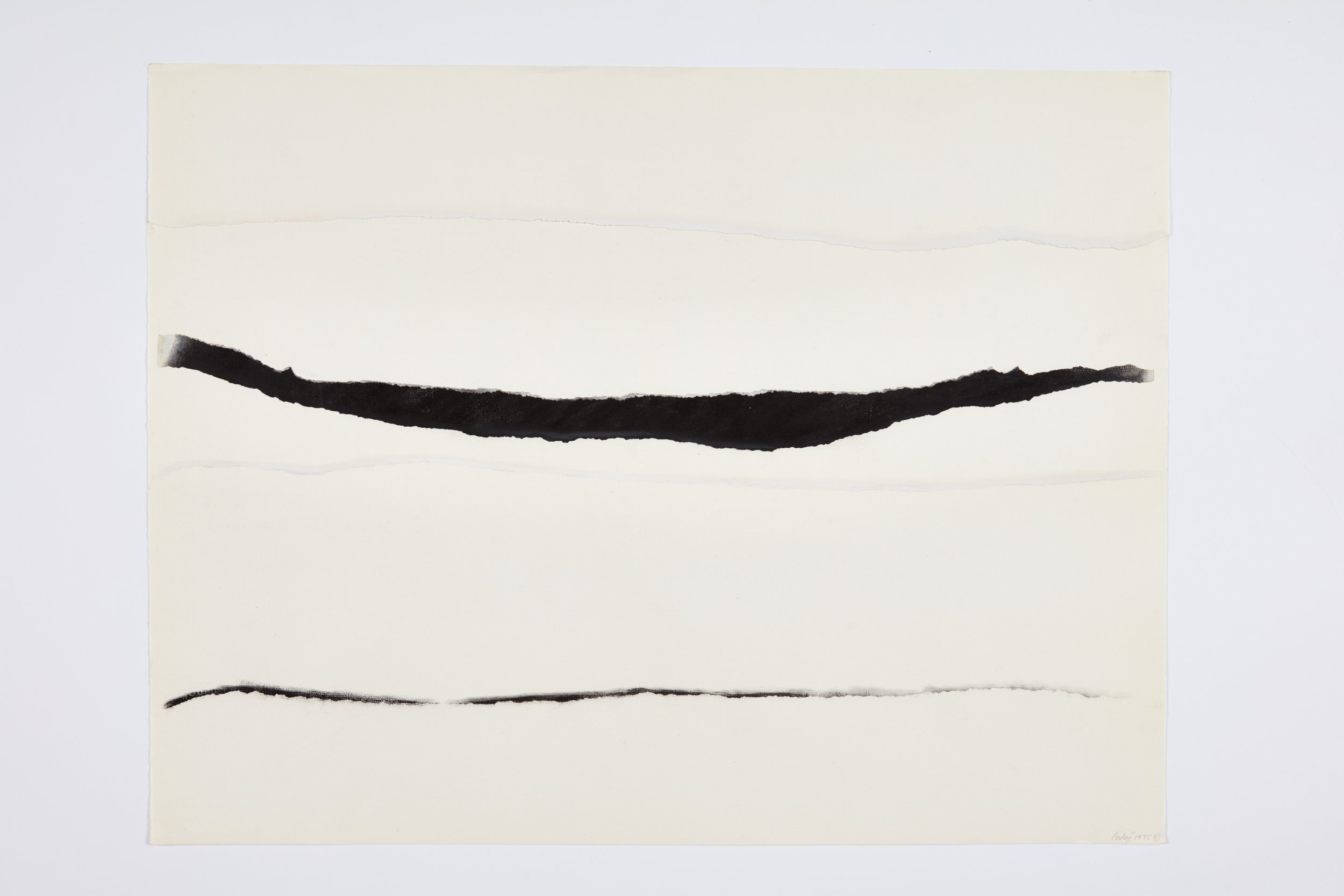
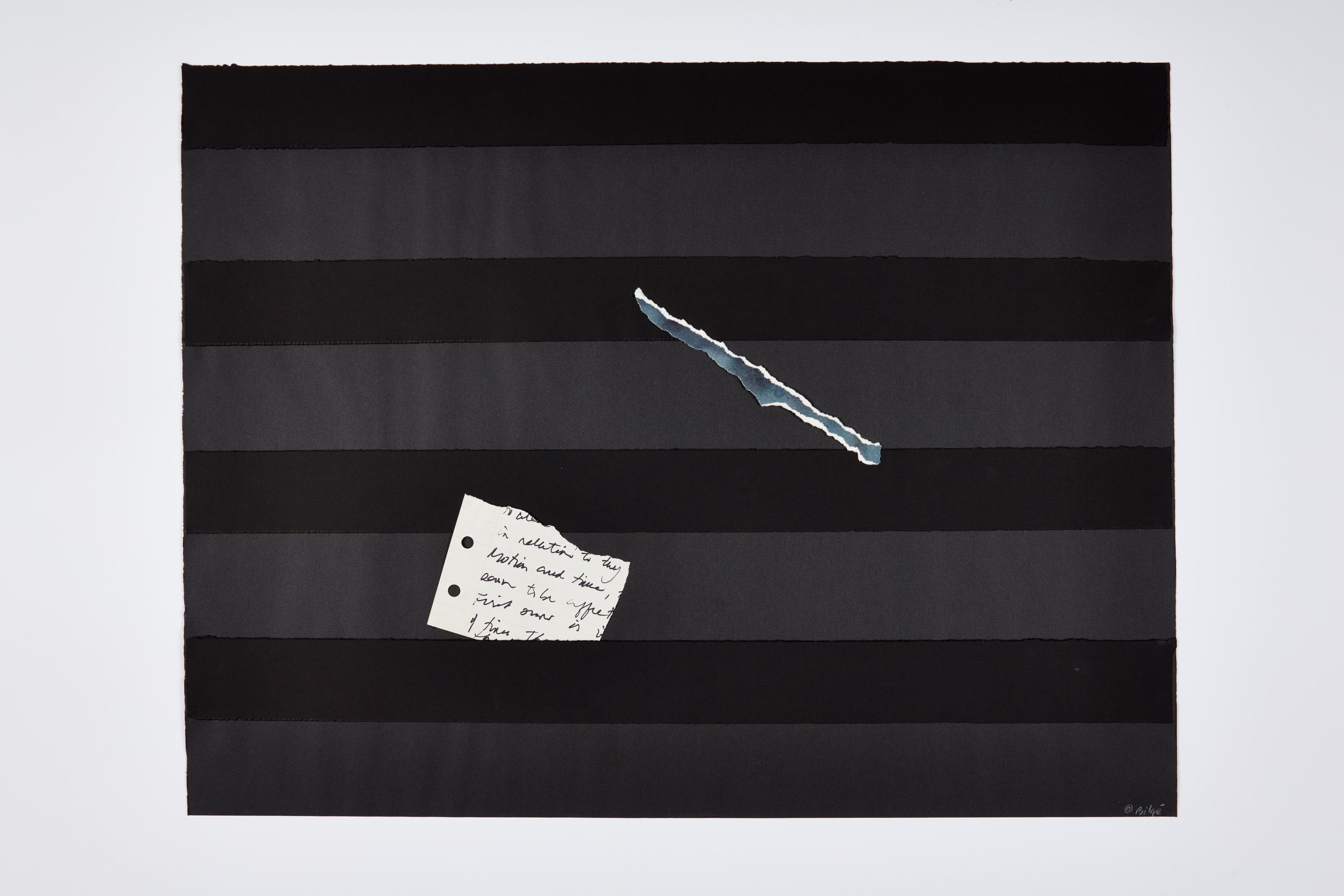
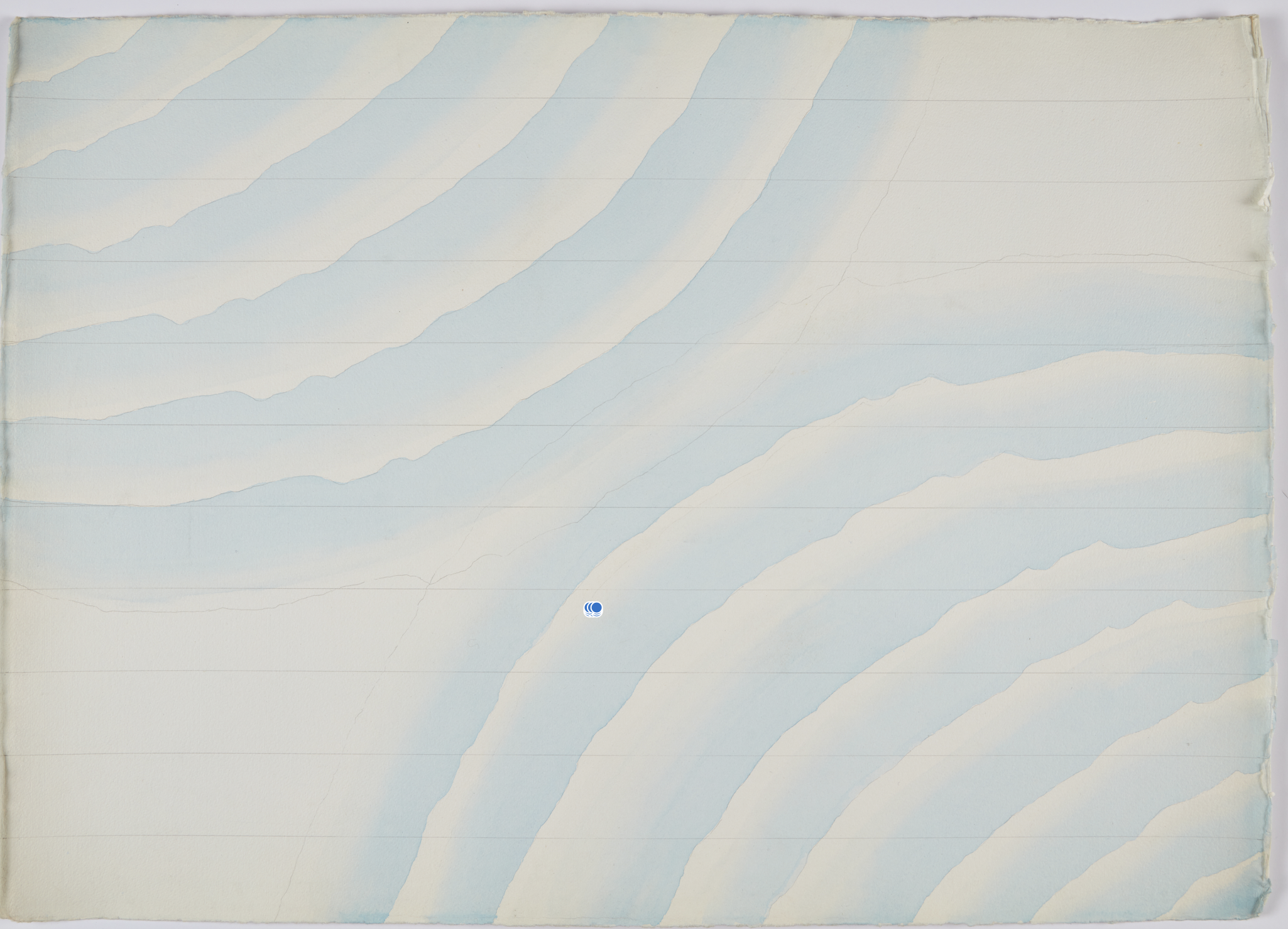
Sapar Contemporary is delighted to present a solo exhibition of Bilgé Friedlaender (Turkey/US, 1934–2000), curated by Isin Önol. The exhibition, titled “Bilgé: Lifespan of a Horizontal Line” is a collaboration with the artist’s estate, and is focused on rare and previously unseen works on paper from the 1970s. The exhibition features a selection highlighting a key period in Bilgé’s oeuvre. The works illustrate the artist’s elaborate visual vocabulary, manifested in her minimalist, sensual, mathematically defined, and yet dimensionality-expanding approach. Through floating squares and poetically ambivalent lines, in superimpositions of fractal paper tears and painted illusions, by contrasting blacks on black and by sculpting shadows of white, Bilgé takes us on an experiential, philosophical journey through her soulful universe.
Bilgé immigrated from her native Turkey to New York in 1958. After early solo shows in the 1970s at Betty Parsons and Kornblee Galleries in New York City; her work was featured internationally throughout the 1980s and 90s, at the Istanbul Biennial, the Museum of Modern Art in Kyoto, Corcoran Museum, Washington D.C. Bilgé spent the majority of her career in the U.S. and exhibited alongside her contemporaries, including Robert Rauschenberg and Michelle Stewart. In recent years, Bilgé’s work received an increasing institutional and scholarly attention through carefully curated exhibitions at Arter, Istanbul, Neues Museum, Nürnberg, and Istanbul Modern. These exhibitions place Bilgé in a distinctly female lineage of abstraction that goes back to the pioneers of this movement. She drew her inspiration from and dialogued with important 20th century American artists, among them Robert Motherwell, Georgia OKeefe, Eva Hess, and Agnes Martin. The artist’s other rich Eastern and Western influences traced in her work include Turkish poetry, Sufi mystics, sacred numerology, as well as Dada and 19th-century American writers.
Essay by Isin Onol
A piece of string is a line, and a line has its own life, has its own character. Different kinds of lines communicate different emotional states. What is the duration of a horizontal line?
Between the myths, languages and materials of her native Turkey and the artistic momentum generated by Abstraction, Minimalism and Fluxus, Bilgé Friedlander sought to develop an expanded space of experience that does not seek to impress through large scale or rigorous repetition, as was otherwise common around the 1970s. By zooming in on the microscopic dimensionality of lines and textures and the intimate medium of hand-made paper and artist books, she adds a deeply personal and sensual streak to the transcendentalist vision of the female pioneers of abstraction. In embedding her cognitive processes — which she eloquently documented in her diaries — into her understated works in the 1970s but also throughout her eco-feminist phase in the 1980s, she connects universal inquiry into the mathematical fabric of the cosmos with a personal situatedness that invites to allow the own mind to expand into the vastness that lives in her works.
Upon first impression, Bilgé Friedlander’s work from the 70s may strike the observer as abstract: Studies of geometrical shapes, often drawn in a minimal manner on paper. It soon becomes apparent, however, that the artist undermines any such notion of abstraction by expanding the dimensionality of the underlying ideas, using a unique, subtle, and often playful visual and material vocabulary.
When Bilgé draws a line, for example, a three-dimensional object gets sculpted, as would become apparent when examining the line by zooming in with a microscope: Any drawn line is not infinitely thin, but has a structured area, and a boundary of fractal dimension. As the tip of the artist’s pencil imprints a groove into the paper, the line even becomes a three-dimensional object. Bilgé consciously tunes the structures and textures of her hand-made papers to help guide this process of sculpting lines.
To further reveal hidden dimensions, Bilgé uses tearing. By tearing paper, she gives the inner complexity that shapes the paper’s character a way of articulating itself as a process that results in a fractal tear line. What used to be crude scaffolding and bland substrate now becomes expressive, allowing a dynamic process to unfold randomly. But like most forms of randomness, such a process must at the same time be seen as an unforgeable signature of a uniquely structured object and of its formerly hidden inner dimensions.
The torn pieces, these chaotic and yet characteristic moments of a distinct generative process now become chess pieces in the playing field of Bilgé’s dimensionality expansions: By tracing the fractal tear line with pencil, she gives official presence to this – otherwise ephemeral – phenomenon. Often, torn paper becomes the element of a new conversation of materials: It may serve as a template, a canvas, an element of a collage, an inspiration for an illusion, a landscape that casts a shadow.
Bilgé’s paper works, just like landscapes, are formed by strata, that is, layers of materials that got torn, warped, stacked, patterned, or coated over time. Bilgé’s stratified paper works — torn, textured, painted, marked with pencil, folded and superimposed — may appear as illusions or ambiguous percepts. Much rather, however, they are invitations to not merely observe them from their visual far-field, their “outer space”, but to imagine experiencing them in the way an ant-sized jogger would, who is fortunate enough to enjoy a run across their surface. Just like a jogger would sense the tactile transition from an elastic and absorbent surface to a hard and smooth one, Bilgé works to articulate and translate those characters of her materials through her interventions, in a way that re-organizes our visual sense: She paints in four shades of white, continues a pencil line with a string, allows a drawn, flat square to develop into a separate, mutated object, casts a real shadow or paints the illusion of one: Her vocabulary seems determined to redirect our tendency to come to quick conclusions from high altitude using hawk-eyed vision into a form of ant-like perception, a new, hybrid visual-tactile sense.
In the recurring motif of what she calls “mutated squares”, Bilgé further develops her search for expanded dimensionality to provide a dynamic appearance to otherwise static geometrical shapes. “How can you make a rigid square do something else?”, she asks. A square is constructed from equally long, strict lines; However, Bilgé’s lines collaborate to strike more flexible poses, as if the square they form was floating in space without gravity. What pose can a square, this collaboration of lines, achieve in collective? In Bilgé’s hands, the squares lift themselves out of the surface that carries them, they assume a materiality that is expressed in their postures. Guided only by their own inner tension and momentum, they warp, curve and float, not as abstractions, but as imaginations of a patch of material, with a character of stiffness or floppiness. In her juxtapositions of mutated squares, Bilgé evokes sequences of poses that unfold themselves and that entirely transcend any flatness, in space or in time.
Bilgé asks herself*: “What is the duration of a horizontal line?” when tearing a piece of paper and observing its journey — And answers: “One horizontal line has the potential of a full life span. It can go to infinity, forever multiplying, diminishing, dying and being reborn as manifests itself in nature.” Paper, this familiar material agent, capable of transmitting human expression from one mind to another in a mobile, lightweight fashion, remains central to Bilgé’s work throughout the decade, and beyond. In revealing both its sculptural and dimensionality-expanding capacities, Bilgé develops this ancient “immutable mobile” into a medium that preserves her artistic research on space and time, and carries it from her studio decades ago, to the observer’s eyes, years after her own lifeline expanded into imperceptible dimensions.
ABOUT ARTIST
Bilgé Friedlaender (1934 - 2000) was a Turkish-American artist who extensively explored sensual, spiritual connections through her artistic engagement with geometric abstraction. In her long and prolific career, her exploration developed through her expressive minimalist visual language. In Friedlaender journals, she spoke of the universal human creations of the “line,” the “square,” and how they embody the human relationship to nature. Bilgé’s career launched with solo exhibitions of minimalist works in 1974 at Betty Parsons and Kornblee Galleries in New York. Across her productive years her art was informed by the writing of Emily Dickenson, Nazim Hikmet, Virginia Woolf and Rumi. Friedlaender’s transformative experiences in nature and with early earthworks set the stage for her later ecological works in the 1980s; making interventions in nature, and working directly with natural materials. She was part of New American Paperworks and exhibited alongside Robert Rauschenberg, Michelle Stewart and many others. She continued to exhibit internationally through the 1990s with works centering on awakening the human consciousness to our interdependencey with nature through exploration of ritual and the ancient Epic of Gilgamesh from an Feminist Jungian position. Exhibition venues included; Pennsylvania Academy of Fine Arts, the Second International Istanbul Biennial, Gallery Nev, Istanbul, American Craft Museum, NY, Museum of Modern Art in Kyoto, University of Massachusetts Museum at Amherst, Corcoran Museum, Washington D.C., Arter, Istanbul, Neues Museum, Nürenberg. Following her 2023 solo exhibition at Sapar Contemporary, as part of a rediscovery of Bilge’s oeuvre, her works have been acquired by Flaten Art Museum at St. Olaf College, MN; RISD Museum, RI; Museum of Fine Arts Boston, MA; Menil Collection, TX. In 2023, Bilge had a solo exhibition at Daura Museum of Art at the University of Lynchburg, VA and is participating in an upcoming project at Harvard University and an exhibition at Martin Art Gallery at Muhlenberg College, PA in 2024.
ABOUT CURATOR
Isin Önol is a curator based in New York and Vienna Before that, she led the Elgiz Museum of Contemporary Art Istanbul as its director and curator. (2006-2009). Her curatorial research focuses on interconnecting archival information with oral histories to create platforms for collective memory through collaborative art practices. She is a research scholar at the Center for the Study of Social Difference, Columbia University since 2014. She has been appointed as a guest professor and curator at University of Applied Arts, Vienna Austria for 2021-2023. She served as a lecturer at Montclair State University, Department of Art & Design for five years. Önol co-founded and directs the Nesin Art Village, an independent art school in Turkey. Önol holds an MFA from Sabanci University, Istanbul, a MAS from Zürich University of the Arts, and is a PhD candidate at the University of Applied Arts, Vienna. Isin Önol has been elected twice among the Board of Directors of Roberto Cimetta Fund for the period 2018-2021 and 2021-2024. Isin Önol co-curated Bilge Friedlaender's first posthumous solo exhibition at Arter, Istanbul, together with Mira Friedlaender in 2016. Her recent exhibitions include Imagine Repair (New York), A Knot in the Throat: Foraging for Vanishing Present (Vienna), Thinking Food Futures (New York), Women Mobilizing Memory (Istanbul, Vienna, New York, Madrid), and When Home Won’t Let You Stay (Vienna). She was one of the curators of the International Sinop Biennial in 2012, 2014 and 2021. She has produced more than 60 exhibitions internationally, and published on the intersection of social justice and art.

